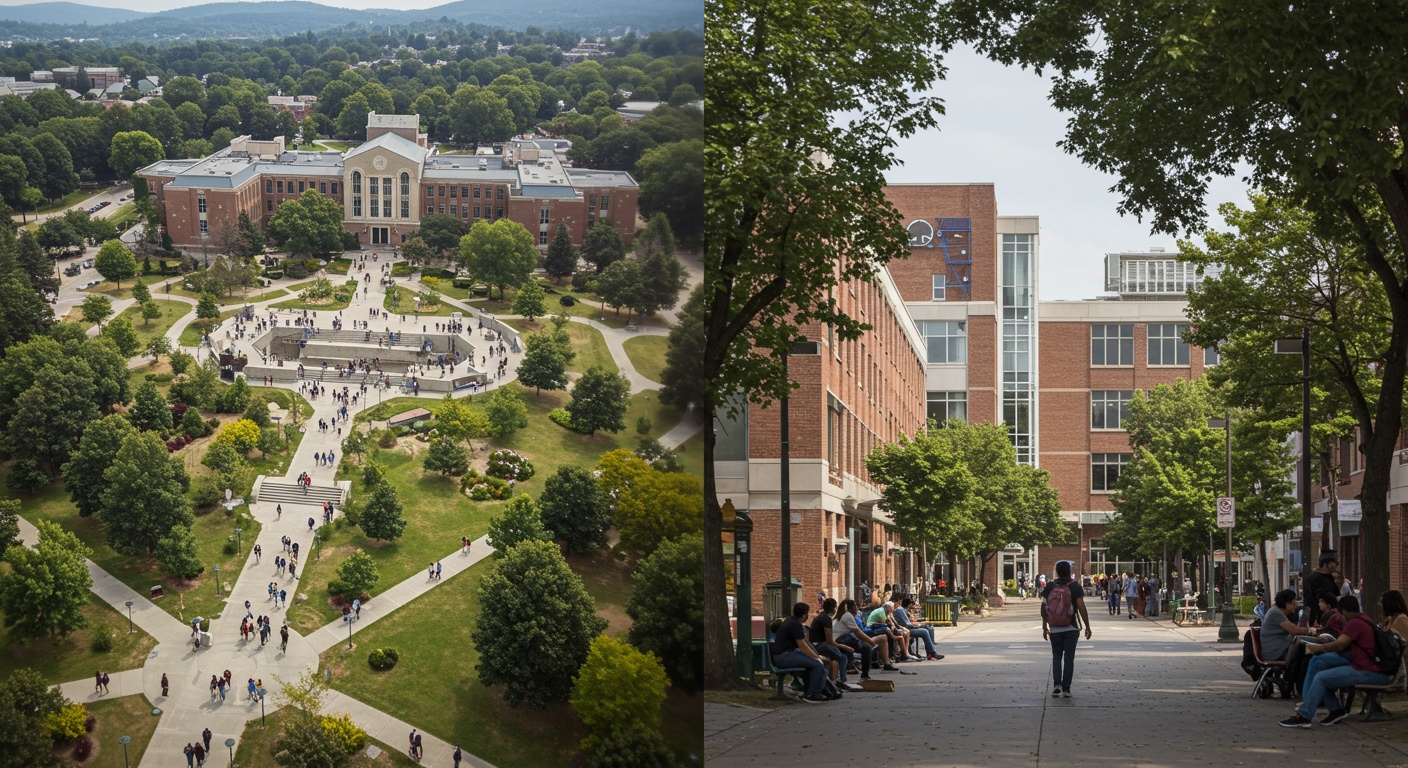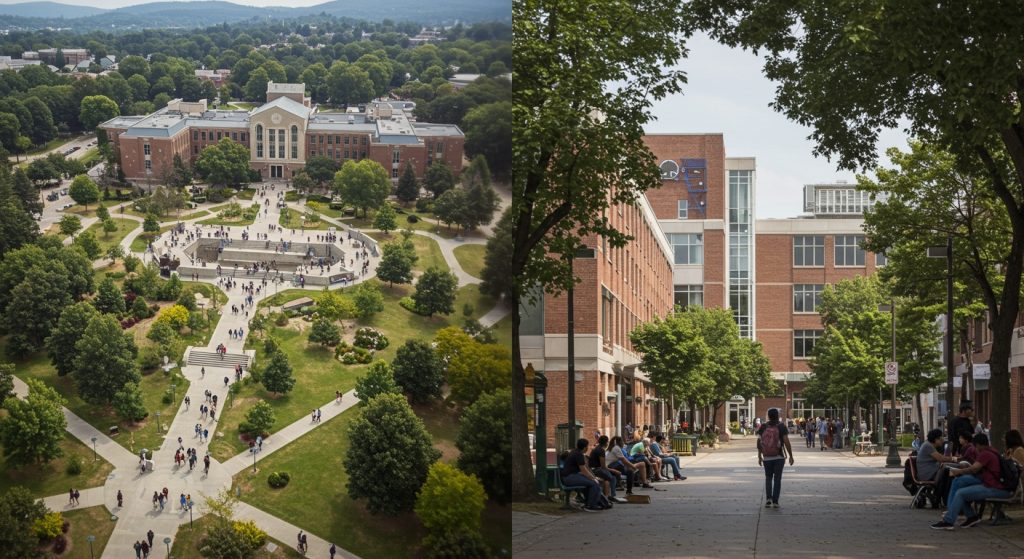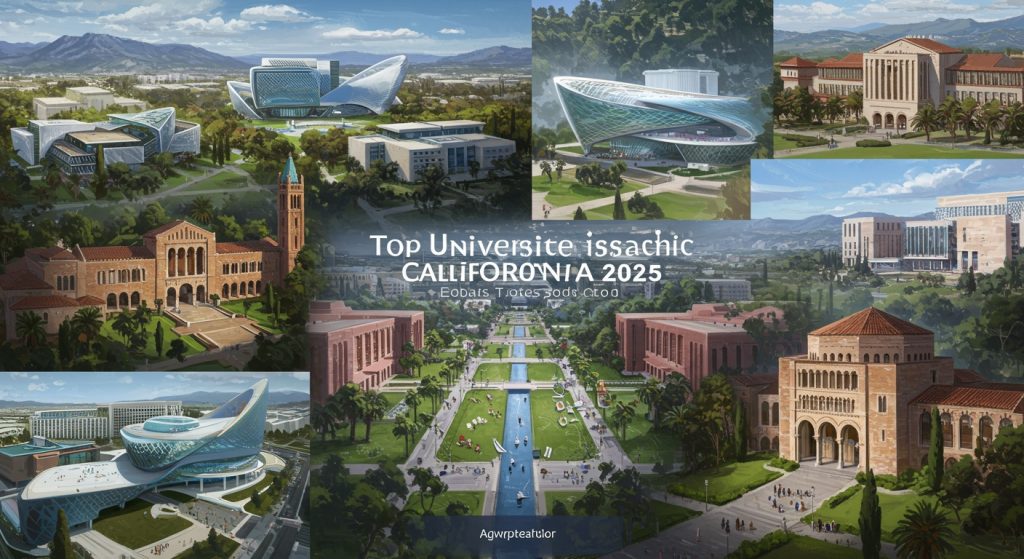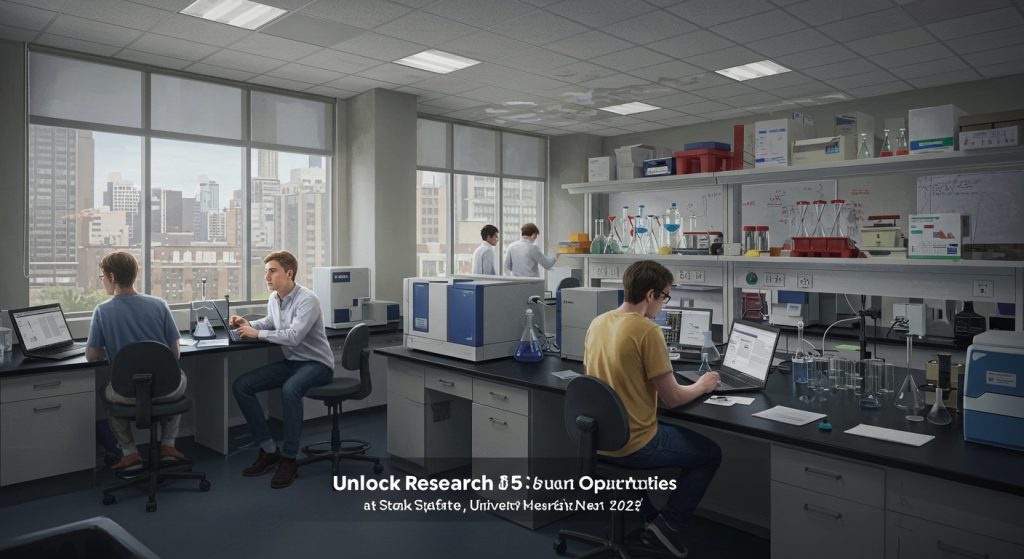Choosing a higher education institution necessitates a strategic evaluation of distinct pedagogical models: the sprawling public university versus the intimate small college. Large state systems, like the University of Texas or the University of Michigan, offer unparalleled access to cutting-edge research in fields from AI ethics to sustainable energy, alongside vast professional networks and diverse student bodies. Conversely, smaller institutions, such as Grinnell or Pomona, prioritize personalized instruction and foster deep faculty-student mentorship, often excelling in interdisciplinary liberal arts programs that cultivate critical thinking. Amidst evolving workforce demands emphasizing adaptable skills and specialized knowledge. With recent developments in hybrid learning models, prospective students must weigh the comprehensive resources of a big campus against the tailored educational experience of a smaller one. This critical decision hinges on individual learning styles and future career aspirations.

Understanding the Landscape: Public Universities
When you envision a “big campus,” you’re likely picturing a public university. These institutions are typically large, state-funded organizations designed to serve a broad range of students and educational needs. They often boast expansive campuses, sprawling departments. A sheer volume of students that can number in the tens of thousands, or even hundreds of thousands when considering all their campuses combined. Public universities are funded primarily by state governments, along with tuition fees, research grants. Donations, which often contributes to a lower tuition cost for in-state residents compared to private institutions.
One of the most compelling advantages of a public university is the sheer breadth of academic programs available. From highly specialized engineering fields to diverse humanities departments, pre-med tracks. Vast business schools, the options are almost limitless. This extensive offering means you have the flexibility to explore different subjects, change your major if your interests evolve, or even pursue interdisciplinary studies that combine elements from various departments. For instance, a student interested in both environmental science and public policy might find robust programs and faculty expertise in both areas, allowing for a truly tailored academic path.
Public universities are also hotbeds of research and innovation. With significant funding and large faculty rosters, they often lead groundbreaking studies in science, technology, medicine. Social sciences. As a student, this can translate into unparalleled opportunities to participate in undergraduate research, work alongside renowned professors. Gain hands-on experience that is invaluable for graduate school or career advancement. Imagine contributing to a cutting-edge genetics project or helping examine data for a large-scale sociological study – these experiences are often more accessible at larger research institutions.
Moreover, the diversity of a public university campus is a major draw. You’ll encounter students from every corner of your state, the nation. The world, bringing a rich tapestry of perspectives, cultures. Backgrounds. This exposure can broaden your worldview, challenge your assumptions. Prepare you for an increasingly globalized world. The vibrant social scene often includes hundreds of student organizations, a wide array of intramural and varsity sports. Large-scale campus events, ensuring there’s always something to do and a community to join. Think of Sarah, who thrived at a large State-wise University because she could join the marching band, volunteer with a local charity. Still pursue her passion for astrophysics, all within the same institution.
But, the scale can also present challenges. Large class sizes, especially in introductory courses, are common, which might mean less personalized attention from professors. While there are typically office hours and teaching assistants, some students may find it harder to forge close relationships with faculty. Navigating a large bureaucracy for administrative tasks can also be daunting. The sheer number of students means you might need to be more proactive in seeking out resources and opportunities.
Exploring Small Colleges
In stark contrast to the sprawling public university, a small college typically refers to a private institution, often with a liberal arts focus, characterized by a significantly smaller student body—ranging from a few hundred to a few thousand students. These colleges are funded primarily through tuition, endowments. Donations, which can sometimes result in higher sticker prices compared to public institutions, though they often offer generous financial aid packages.
The defining characteristic of a small college is its emphasis on personalized attention and a tight-knit community. With smaller class sizes—often numbering under 20 students—you’re more likely to engage in lively discussions, receive direct feedback from professors. Build strong mentor relationships. Professors at small colleges often prioritize teaching over extensive research, dedicating more time to their students both inside and outside the classroom. This environment can be incredibly beneficial for students who thrive on individual guidance and a collaborative learning atmosphere. For example, Mark, a shy student, found his voice and confidence at a small liberal arts college where professors knew him by name and actively encouraged his participation.
Small colleges often cultivate a unique academic experience, frequently centered around a liberal arts curriculum. This approach encourages a broad education across various disciplines, fostering critical thinking, strong communication skills. Adaptability rather than focusing on highly specialized vocational training. Many small colleges also emphasize interdisciplinary studies, allowing students to craft unique majors or combine seemingly disparate fields. For instance, you might be able to design a major that blends philosophy, computer science. Ethics, a flexibility less common at larger institutions.
The community aspect is another significant draw. With fewer students, it’s easier to recognize faces, form close friendships. Feel a strong sense of belonging. The social scene, while perhaps less vast than a large university, is often more intimate and community-driven, with a focus on campus events, student-led initiatives. Shared experiences. Residential life is frequently a cornerstone, with a high percentage of students living on campus, further strengthening the community bonds. Many alumni of small colleges speak passionately about the lifelong connections they formed during their undergraduate years.
But, the compact nature of a small college also means fewer academic programs and less variety in course offerings. If you have a highly specific or niche academic interest, a small college might not offer the depth or specialization you need. Research opportunities, while often available, may be less extensive or focused compared to large research universities. The social scene, while intimate, might also feel less diverse or offer fewer options if you crave a bustling urban environment or a wide range of social outlets.
Key Differentiators: A Comparative Look
Choosing between a public university and a small college is a significant decision that hinges on your individual learning style, social preferences. Career aspirations. Understanding their core differences is crucial. Let’s break down some of the key areas:
| Feature | Public University | Small College |
|---|---|---|
| Size & Community | Large student body (10,000+), diverse, bustling; can feel anonymous. | Small student body (under 5,000), intimate, tight-knit; strong sense of belonging. |
| Academic Focus | Broad range of highly specialized programs, extensive research opportunities, graduate-level courses. | Often liberal arts-focused, interdisciplinary studies, emphasis on undergraduate teaching, close faculty mentorship. |
| Class Size & Interaction | Large lecture halls common, less individualized attention, more competitive for faculty interaction. | Small classes, frequent discussions, direct access to professors, personalized feedback. |
| Cost & Financial Aid | Lower tuition for in-state residents, higher for out-of-state. Financial aid competitive. | Higher sticker price. Often generous institutional aid, making net cost comparable for many. |
| Campus Life & Activities | Vast array of clubs, Division I sports, large social events, extensive facilities. | Fewer. Often more student-led and inclusive activities, strong campus traditions, smaller athletic programs. |
| Career Services & Alumni Network | Large, broad alumni network, extensive career fairs, diverse internship opportunities. | Smaller, often very connected and supportive alumni network, personalized career guidance. |
| Flexibility & Exploration | More options to change majors, explore different departments due to sheer variety. | Can be more flexible in designing unique interdisciplinary paths. Fewer pre-set options. |
Consider the story of David, who initially chose a large public university because of its prestigious engineering program. While he appreciated the resources, he felt lost in large lectures and struggled to connect with professors. After two years, he transferred to a smaller polytechnic college where he thrived in hands-on labs and received direct mentorship from faculty, ultimately excelling in his field. Conversely, Emily loved her experience at a large State-wise University because she could take classes in ancient languages, join the debate team. Work in a cutting-edge genetics lab, truly exploring her diverse interests.
Making Your Choice: Factors to Consider
The “best” choice isn’t universal; it’s deeply personal. To make an informed decision, reflect on what truly matters to you in a college experience. Here are some actionable takeaways and factors to consider:
- Your Learning Style
- Academic Interests & Future Goals
- Social Environment & Campus Culture
- Financial Considerations
- Location and Proximity
Do you thrive in large lecture settings, or do you prefer intimate discussions where your voice is always heard? Are you self-motivated enough to seek out resources in a large system, or do you need a more structured and supportive environment? If you learn best through close interaction and personalized feedback, a small college might be a better fit. If you are an independent learner who can take initiative, a public university’s vast resources could be ideal.
If you have a very specific, niche major in mind (e. G. , aerospace engineering or neuroscience), a large public university is more likely to offer specialized programs and advanced research opportunities. If you’re undecided or interested in a broad, interdisciplinary education that emphasizes critical thinking and communication, a liberal arts college could be excellent. Think about where you want to be in five or ten years. Which environment best prepares you for that path.
Do you envision yourself in a bustling campus town with Division I sports and a vibrant Greek life, or a more serene campus where community events are the norm? Consider the size of the student body and the overall vibe. If you crave anonymity and a multitude of social options, a large university fits. If you prefer a tight-knit community where everyone knows everyone, a small college is probably for you.
While public universities often have lower sticker prices for in-state students, don’t rule out small colleges without looking at their financial aid packages. Many private institutions offer significant grants and scholarships that can bring their net cost down to be comparable, or even lower, than public university tuition. Always compare the “net price” (what you actually pay after aid) rather than just the “sticker price.”
Do you want to stay close to home, or explore a new part of the country? Both public universities and small colleges exist across all states, so consider the regional offerings. When looking at State-wise Universities, research their specific strengths and campus cultures, as they can vary greatly even within the same state system.
To truly get a feel for an institution, nothing beats a campus visit. Walk the grounds, sit in on a class, talk to current students and faculty. If an in-person visit isn’t possible, take virtual tours, attend online insights sessions. Connect with admissions counselors. Reach out to alumni on LinkedIn to get their perspective. The key is to gather as much data as possible to align the college’s offerings with your personal aspirations and needs. Remember, the goal is not to find the “best” college. The “best fit” for you.
Conclusion
The journey to choosing your university is profoundly personal, not a one-size-fits-all decision. Whether you lean towards the sprawling public university, with its vast research labs and diverse student body, or the intimate small college offering unparalleled faculty mentorship, remember that ‘big opportunities’ exist in both. For instance, while a public university like UC Berkeley might offer a breadth of cutting-edge AI courses and a massive alumni network, a smaller institution like a specialized liberal arts college could provide the direct, hands-on research experience vital for a niche field, often through unique programs that foster deep connections. My personal advice? Go beyond the brochures. Engage with current students during virtual tours or campus visits. Ask yourself: do you thrive in a bustling environment with myriad extracurriculars and large lecture halls, or do you prefer a close-knit community where every face is familiar? Recent trends show an increasing emphasis on interdisciplinary studies and experiential learning, which both types of institutions are adapting to in unique ways. Ultimately, your ideal campus is where you’ll truly flourish, where your unique learning style aligns with the educational environment. Where you’re empowered to seize your next big opportunity.
More Articles
Tuition Transparency: A Simple Breakdown of University Fees for Aspiring Students
Unlocking University Funding: Your Ultimate Guide to Securing Scholarships and Grants
Beyond Tuition: Uncovering Hidden University Costs Every Student Must Anticipate
Smart Strategies: Mastering Your University Living Expenses Budget for a Stress-Free Student Life
Online vs. On-Campus: Are Digital University Courses Truly More Affordable for Students?
FAQs
How do I even begin to decide between a big public university and a small college?
Start by thinking about your learning style and social preferences. Do you thrive in large, bustling environments with endless academic and social options, or do you prefer a close-knit community where you’re likely to know many faces and receive more individualized attention? Both offer excellent education, just different experiences.
What kind of academic differences should I expect?
Public universities typically boast a vast array of majors, minors. Specialized research opportunities across numerous departments and colleges. Small colleges, while perhaps having a more focused curriculum, often excel in providing direct access to professors, hands-on projects. A more integrated learning experience, sometimes even across disciplines.
Is campus life really that different at a big school versus a small one?
Absolutely! Big universities often have a vibrant, bustling campus with thousands of clubs, huge sporting events. A very diverse student body. Small colleges usually foster a more intimate, community-oriented social scene where it’s easier to know many people and get deeply involved in a few activities, leading to a strong sense of belonging.
Will I just be a number in a lecture hall at a big university?
While introductory classes at large universities can be big, many also have smaller discussion sections led by teaching assistants or even professors. Small colleges almost guarantee smaller class sizes, leading to more direct interaction with professors, personalized feedback. Often stronger mentorship relationships.
Are big public universities always cheaper, or is it more complicated than that?
For in-state residents, public universities often have lower sticker tuition prices. But, it’s not always cheaper overall. Small colleges sometimes offer generous institutional scholarships and financial aid packages that can significantly reduce the net cost, making them competitive. The value of personalized attention can be immense.
Which type of school prepares you better for a job after graduation?
Both can prepare you exceptionally well, just in different ways. Big public universities often have massive alumni networks and extensive career services with connections to large corporations and diverse industries. Small colleges frequently boast strong, dedicated alumni networks in specific fields and provide tailored career guidance, sometimes leading to more personalized internship and job placements.
What if I’m not sure what I want to study? Which school is better for exploring?
Big public universities, with their wide range of departments and programs, can be fantastic for exploring diverse fields before declaring a major. Small colleges, while having fewer options, often encourage interdisciplinary studies and can provide closer academic advising and a more supportive environment to help you discover your path.



